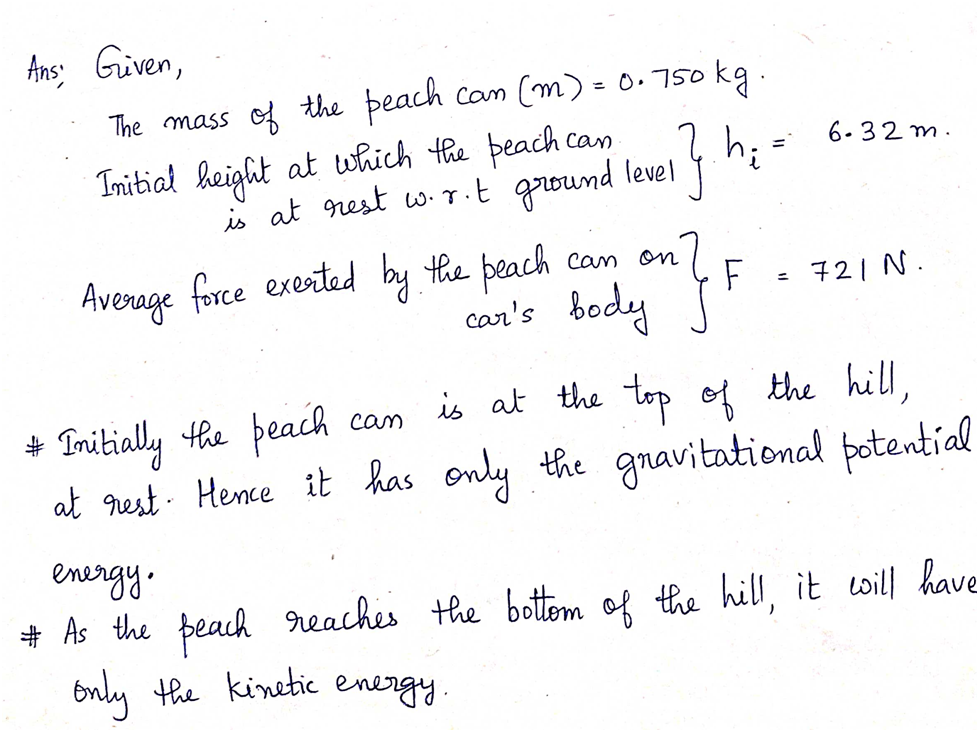4) A 0.750-kg peach can is at rest in a shopping cart at the edge of a hill. A strong wind sets it into motion, sending it down a 6.32 meter high hill. The cart hits a tree stump. The peach can, being in motion, continue in motion until it finally collides with a car. Upon impact, the peach can exert an average force of 721 N upon the car body. a. Determine the gravitational potential energy of the peach can when it is at rest at the top of the hill. hi b. Determine the kinetic energy of the peach can when it reaches the bottom of the hill. What assumptions did you make? c. Determine the depth of the dent the can makes on the car. What assumptions did you make?
4) A 0.750-kg peach can is at rest in a shopping cart at the edge of a hill. A strong wind sets it into motion, sending it down a 6.32 meter high hill. The cart hits a tree stump. The peach can, being in motion, continue in motion until it finally collides with a car. Upon impact, the peach can exert an average force of 721 N upon the car body. a. Determine the gravitational potential energy of the peach can when it is at rest at the top of the hill. hi b. Determine the kinetic energy of the peach can when it reaches the bottom of the hill. What assumptions did you make? c. Determine the depth of the dent the can makes on the car. What assumptions did you make?
Related questions
Question
Answer questions 4-5

Transcribed Image Text:4) A 0.750-kg peach can is at rest in a shopping cart at the edge of a hill. A strong wind sets
it into motion, sending it down a 6.32 meter high hill. The cart hits a tree stump. The
peach can, being in motion, continue in motion until it finally collides with a car. Upon
impact, the peach can exert an average force of 721 N upon the car body.
a. Determine the gravitational potential energy of the peach can when it is at rest at
the top of the hill.
hi
2
b. Determine the kinetic energy of the peach can when it reaches the bottom of the
hill. What assumptions did you make?
c. Determine the depth of the dent the can makes on the car. What assumptions did
you make?

Transcribed Image Text:5) A bouncy ball that makes a perfectly elastic collision in the absence of air resistance (a
vacuum) could be a candidate for a perpetual motion machine. A physics class collects data
(below) on bouncy balls from three companies using a cylinder in which all air was removed. All
bouncy balls were dropped from a height of 1.5 m.
Company
X
Y
Z
Mass of Bouncy Ball
(kg)
0.05
0.08
0.10
Velocity immediately
after bounce (m/s)
5.38
5.25
5.31
a.
Do any of the following companies make a bouncy ball that could result in a
perpetual motion machine? Briefly explain your thinking.
b.
Rank the three companies in increasing order of energy lost to surroundings.
Briefly explain your thinking.
Expert Solution
Step 1

Trending now
This is a popular solution!
Step by step
Solved in 5 steps with 5 images
